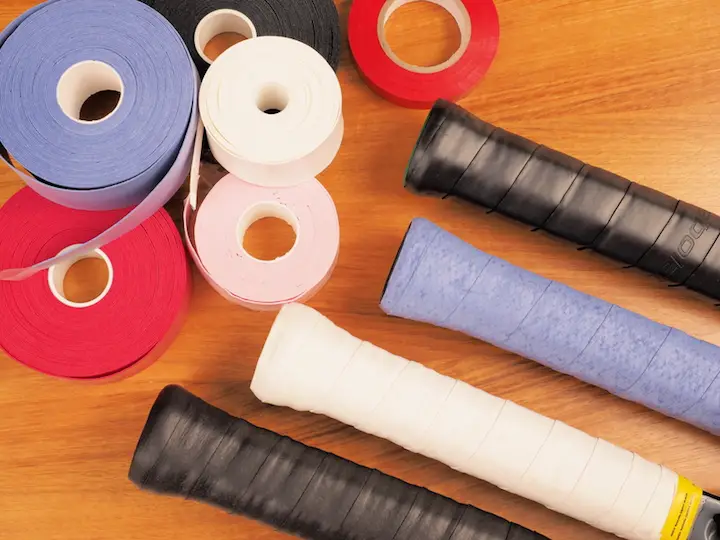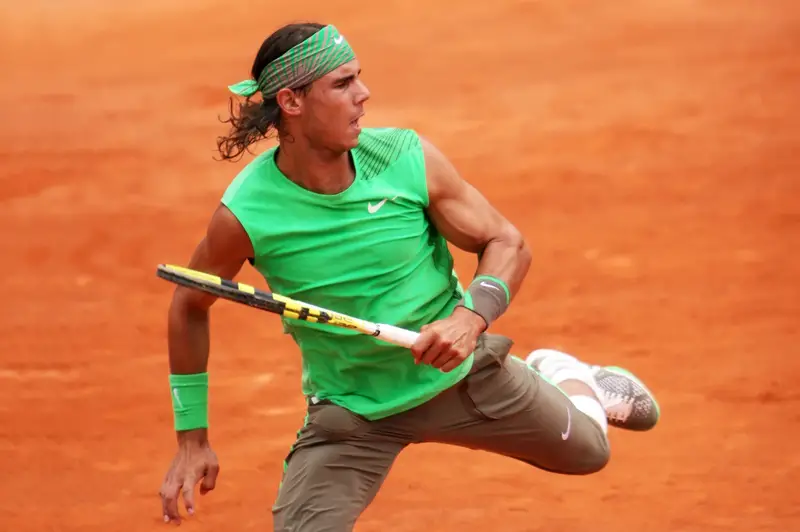Your Guide
 Gavin Davison
Gavin Davison
I can remember all those years ago; there would be a question that would keep me up at night – how do I actually become a tennis professional?
I had no clear idea of what I actually had to do, besides training hard every day, competing in tournaments, and picking up ranking points wherever I could.

Of course, this was all during the early days of playing as a junior, but to earn the title of a ‘professional,’ you needed to obtain an ATP ranking – something which could only be achieved by racking up points in ATP (or ITF) events.
Fast forward to today, I know exactly how to become a professional tennis player, although let me tell you now – the journey is far from easy.
It requires dedication, sacrifice, commitment, and many other ingredients that are pivotal for success in tennis.
So, if you are interested in discovering more about the journey and what it entails, read on!
Your step-by-step guide
As stated above, it’s far from easy to become classed as a ‘tennis professional’, but to give you an idea of what’s required, check out this quick read.
This piece provides you with the ins and outs of the daily grind and hard work, whereas below, I will be focusing on the actual journey itself.
On that note, let’s get started, shall we?
Compete in Local Tournaments
You’ll notice a pattern as we work through our journey – it’s all about competing and moving onto the next challenge.
But for now, if you are on the first step of the ladder, it’s necessary to enter local tournaments to gauge your level and see how you perform against local competition.
The method behind this is that you will not only get used to competing, but you can easily assess whether you are ready to venture further afield based on whether you are winning most of your matches or losing most of your matches in these tournaments.
I would recommend staying as local as possible, as it can get expensive quickly when traveling to other parts of the country.
Therefore, why not assess your abilities while keeping things as cost-effective as possible?
Compete in Regional/National Tournaments
Our next step on the ladder is to move onto regional and even national events, where players from all over the country will come AND COMPETE.
These tournaments are usually much tougher than your local competitions, mainly because they will have a higher grading, and this then attracts better players alongside the promise of more rankings points for those that do well.
Note that depending on where you are reading this from, your individual country may have a different rankings system than others.
For example, if you are reading this from the USA, they have a designated USTA system, whereas other countries have different structures in place.
The good news is that the overall objective remains somewhat consistent – you will build points based on your tournament performances, and this will lead to a national ranking for your age group.
Start to Move Into International Tournaments
When you start to perform really well at the national level, it’s time to start thinking about international events.
For juniors, the governing body that oversees this is known as the ‘ITF Juniors circuit, and for adults, it is simply the ‘ITF Circuit’.
These governing bodies put on tournaments all over the world, quite literally, every single week. Of course, you won’t be able to travel to all of them, and whether you get into the main draw or qualify depends on your ITF ranking.
Note that until you rack up any ITF points, you will need to enter the lower-grade events, and it’s almost a guarantee that you will be in the qualifying draw.
Don’t worry, I’ve been there myself, and once you have a good run or maybe get a somewhat fortunate draw, you will gain some points and then be entered into the main draw automatically – which is where you can gain points for each victory.
It is at this point where you might want to start thinking about finding sponsors too, as it can get extremely expensive when trying to fund your tennis travels and competitions yourself.
Continue to Travel and Move up the Tiers
This is where things can get rather interesting regarding the journey to becoming a professional player. Many don’t actually know this – I certainly didn’t for the LONGEST TIME!
For professional tennis, there are three tiers of competitions that you can enter. The bottom tier is the one which I have been talking about above, known as the ITF circuit.
While yes, these are still classified as professional events, they count the least in terms of the POINTS THAT YOU CAN ATTAIN.
Unfortunately, until your ranking is high enough for the next tier, you must keep playing these tournaments.
Moving up from the ITF circuit, you’ll then start playing events that are known as ‘challengers’.
To get into these tournaments, you’ll usually need to be ranked inside the top 300-400, depending on how prestigious the tournament is.
It is possible to gain entry if your ranking is lower, but this depends on the entrants and the size of the draw.
From here, the next stage you will reach is the ATP circuit for men or the WTA circuit for women.
These events are the ones that you can watch on mainstream TV, although to be involved in these tournaments, you must be ranked within the top 200 most of the time – that’s to even get into the qualifying.
Reach a Point Where Your Tennis Income Supports Your Living
Technically speaking, as soon as you have any points at a professional level, you would fall under the category of a ‘professional tennis player’.
But for me, this ISN’T REALLY ENOUGH.
Being a professional to me means that you are making a consistent income from what you do and that this income is enough to support yourself and your family, where applicable.
This definition of being a tennis professional isn’t really realized until you become ranked inside the top 250 or 300, as this is where the prize money you can earn starts to become somewhat significant.
It’s also where you start to enter the spotlight a little more, which is when you might be approached for endorsement deals of various kinds.
For me, this is the final stage of being viewed as a professional tennis player, and if this is something you are pursuing, I wish you the very best!
Enjoy the article? Have anything to add? Please share it in the comments below!



